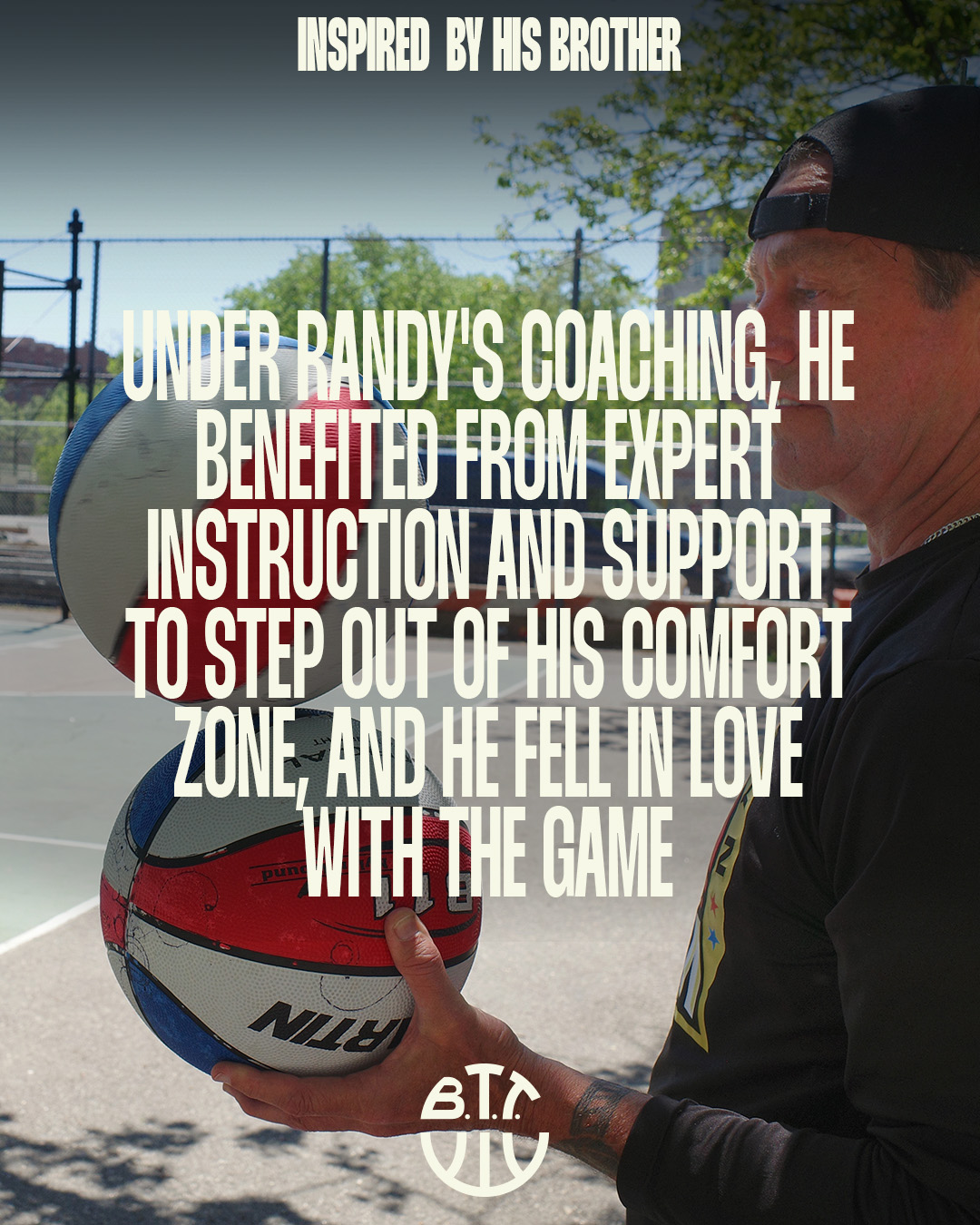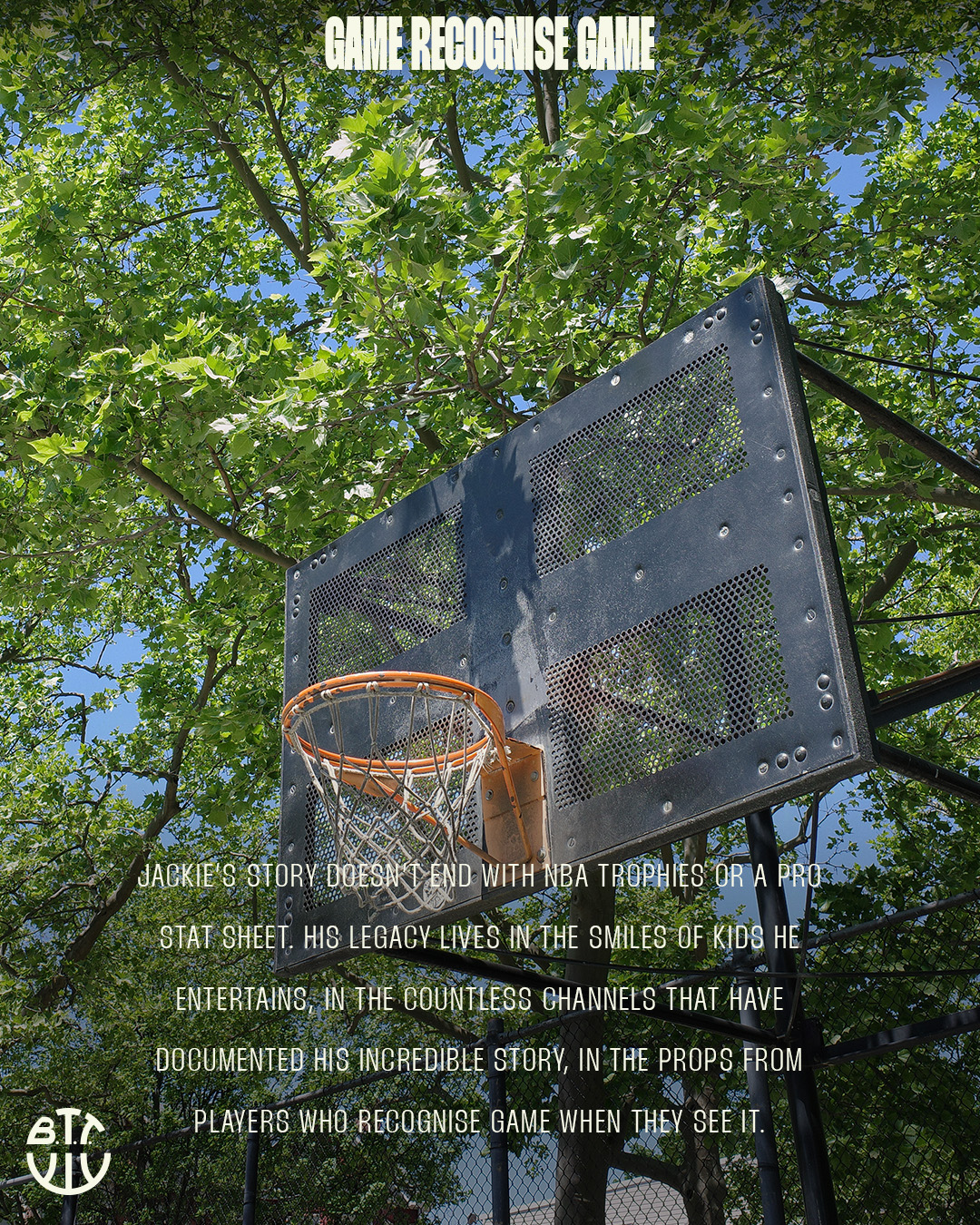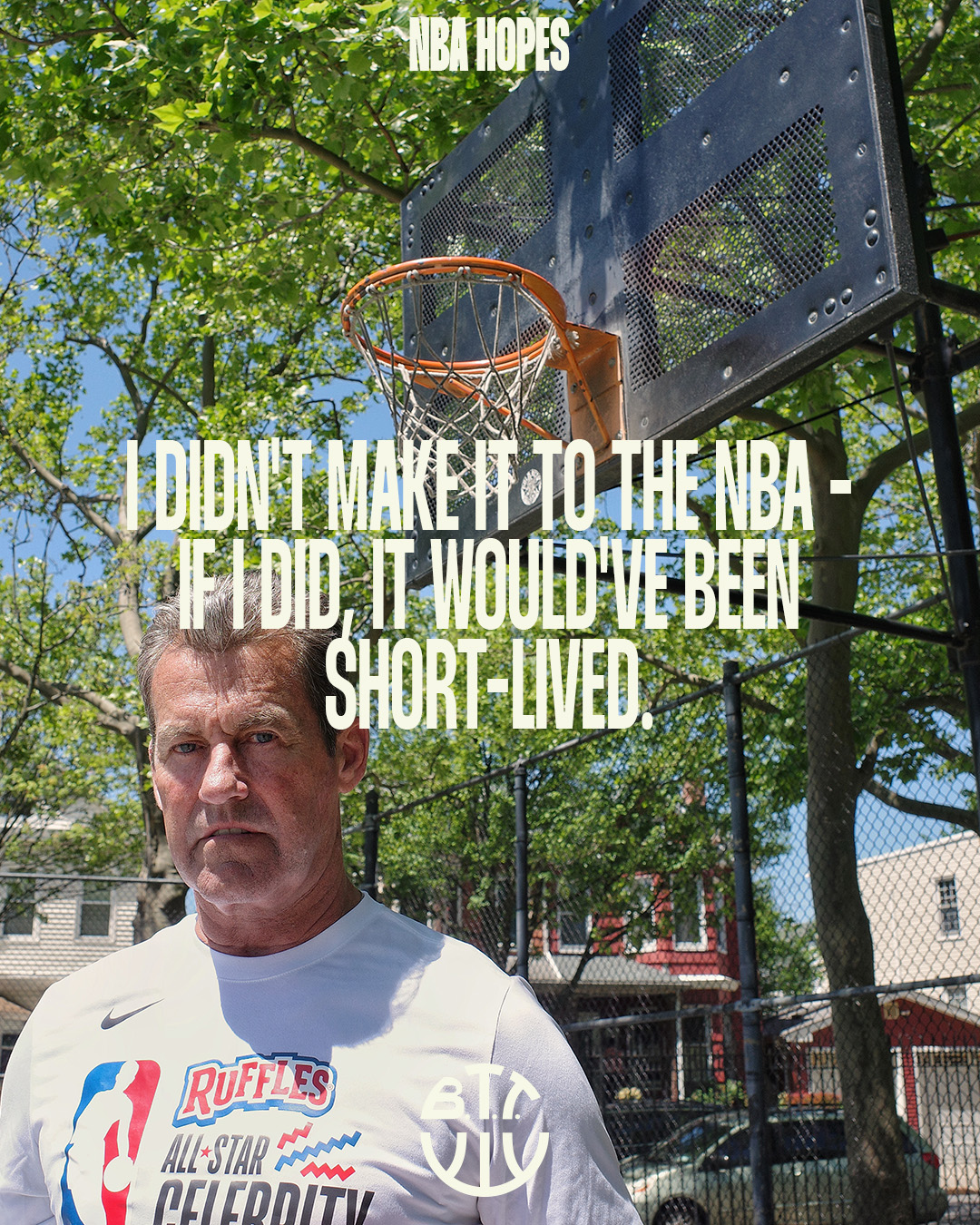Blacktop Tales | Season 3 | Episode 3 | Jackie ‘Black Jack’ Ryan | East 5th St Park, Brooklyn
Showing off has always been something that Jackie Ryan does best. As a kid, his antics had him kicked out of classrooms and his grandmother lighting the most candles for him at the Catholic church down the street. As an adult, his antics light up defenders, light up scoreboards, light up a whole room.
“My mother had five kids, but she always said, ‘Jackie, you were so much different from the others.’” So much so that she had him checked out by a doctor from an early age, where he was diagnosed with ADHD. Being labelled as 'hyperactive' wasn't so common at the time, so where kids would now be prescribed medicine, Jack had to live with it. It was the reason he couldn't listen, why he thought he could get away with anything, why he thought he'd never get caught. It was the reason he knocked out his teeth the first time he rode a bike — attempting no hands on his very first try. It's why he played the class clown. It was the reason his grades were bad. It's the reason why he loves to show off. It's the reason why he's one of NYC's greatest streetball players ever.
Before he ever picked up a basketball, Jack was a talented quarterback, on track to fulfil his father’s dream of a football career. He started playing both sports at eight years old, but by the time he was 12 — after breaking his wrist — he didn’t want to play football anymore. Somewhere between getting hurt, watching the great Curly Neal of the Harlem Globetrotters spin a ball on his finger, and being inspired by his older brother Randy’s talent, Jack decided he wanted to be a hooper. Under Randy's coaching, he benefited from expert instruction and support to step out of his comfort zone — and he fell in love with the game.
Basketball would serve Jackie's knack for flair and showmanship, his drive to be competitive, and would soothe his ADHD. The Windsor Terrace neighbourhood where he lived had a deep culture of sports, with a huge softball league, a passion for handball, and a huge basketball community. East 5th St Park would serve as both a battleground and a training field. Geographically, the court sits beside the hum of Prospect Expressway traffic and the birdsong that fills the nearby tree-lined streets. It's a hub of activity, with local high school kids pouring into the space during recess and parents bringing children to enjoy the play area that sits at the other side of the fence. During my visit, significant construction work is taking place to improve the facilities. Talking to Jack, I'm struck by the fact that the simple metal rims were all he ever needed.
"I would sneak out of my bedroom window at 2 a.m. to play on this court. This was the only place where I felt I was doing something right."
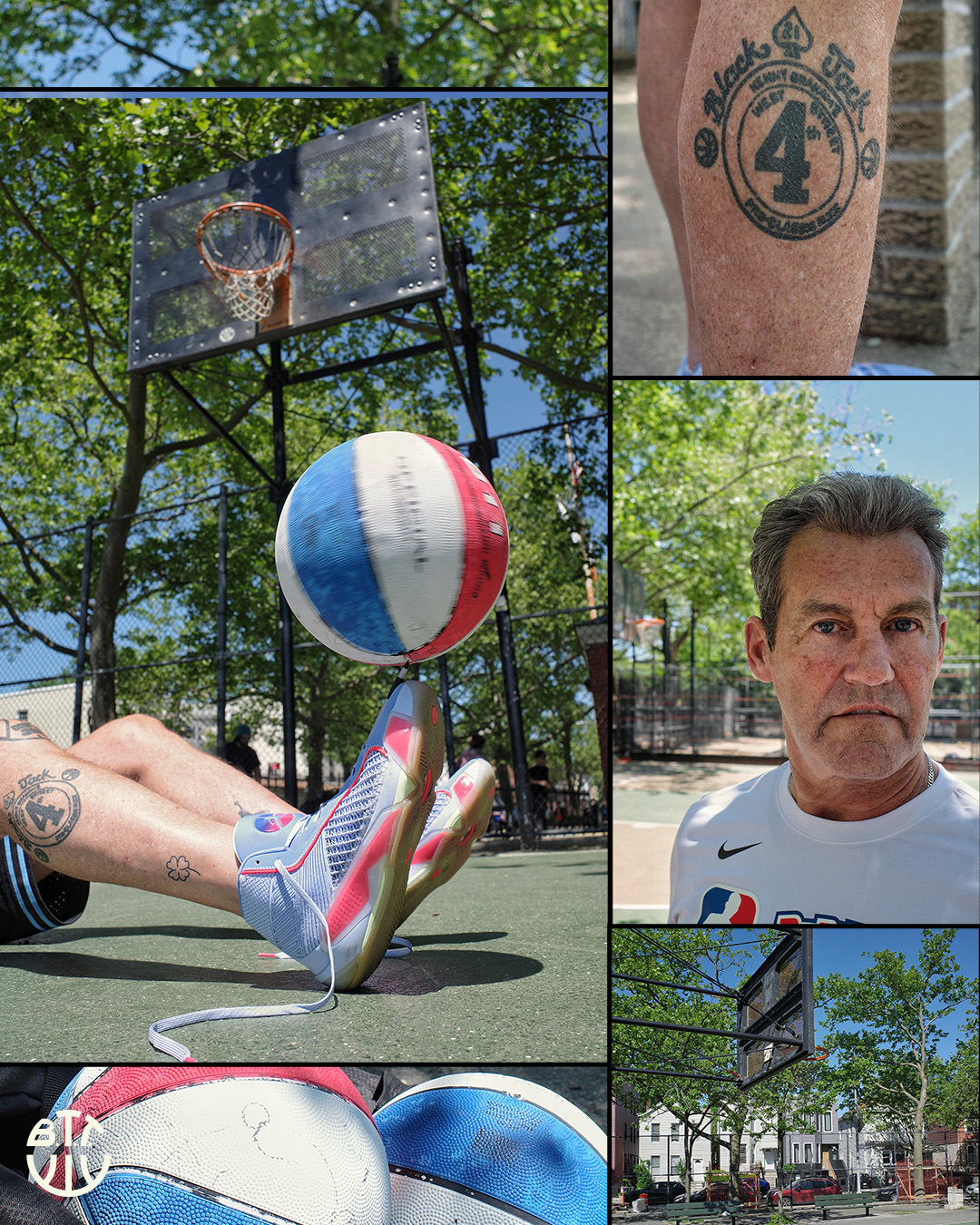
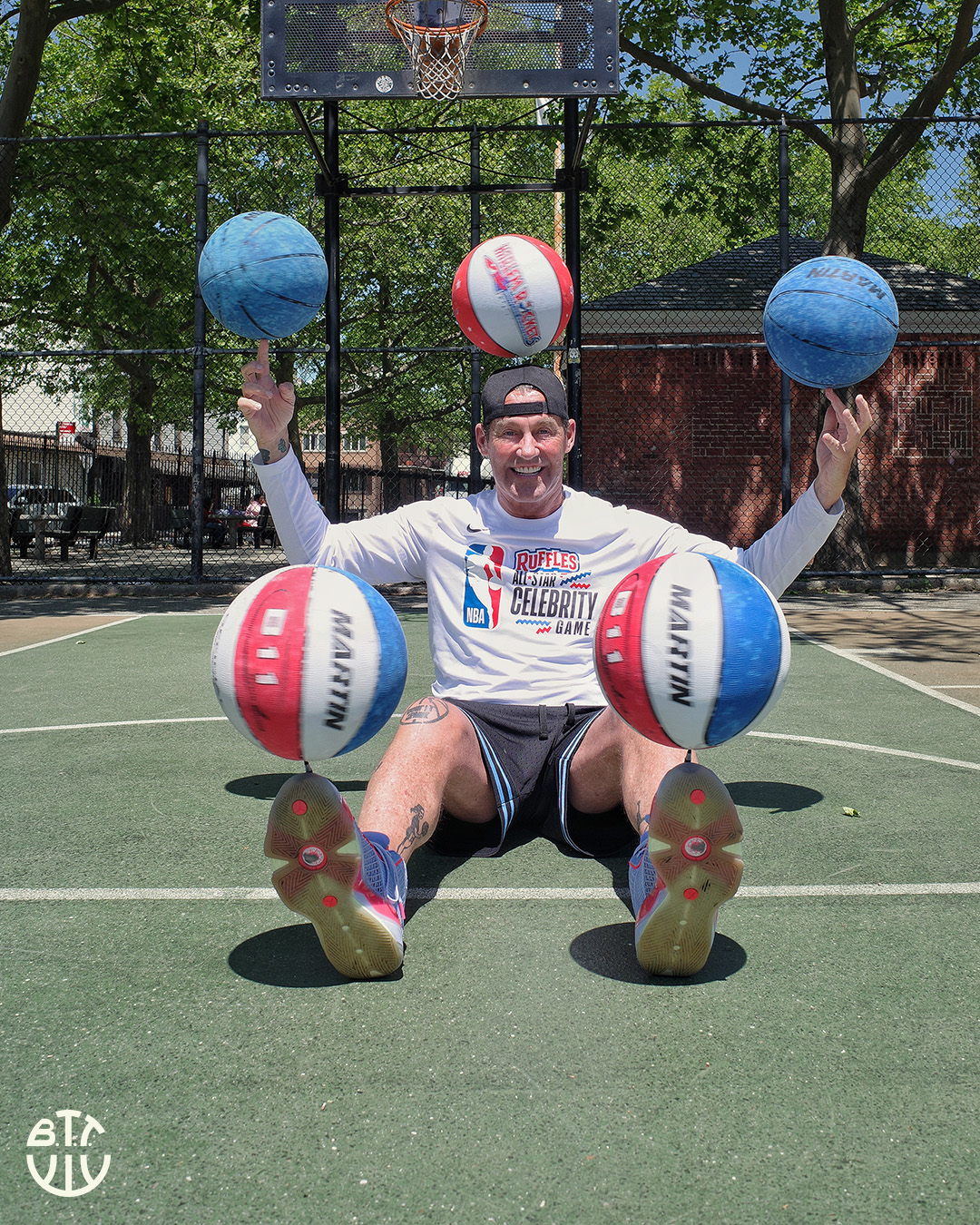
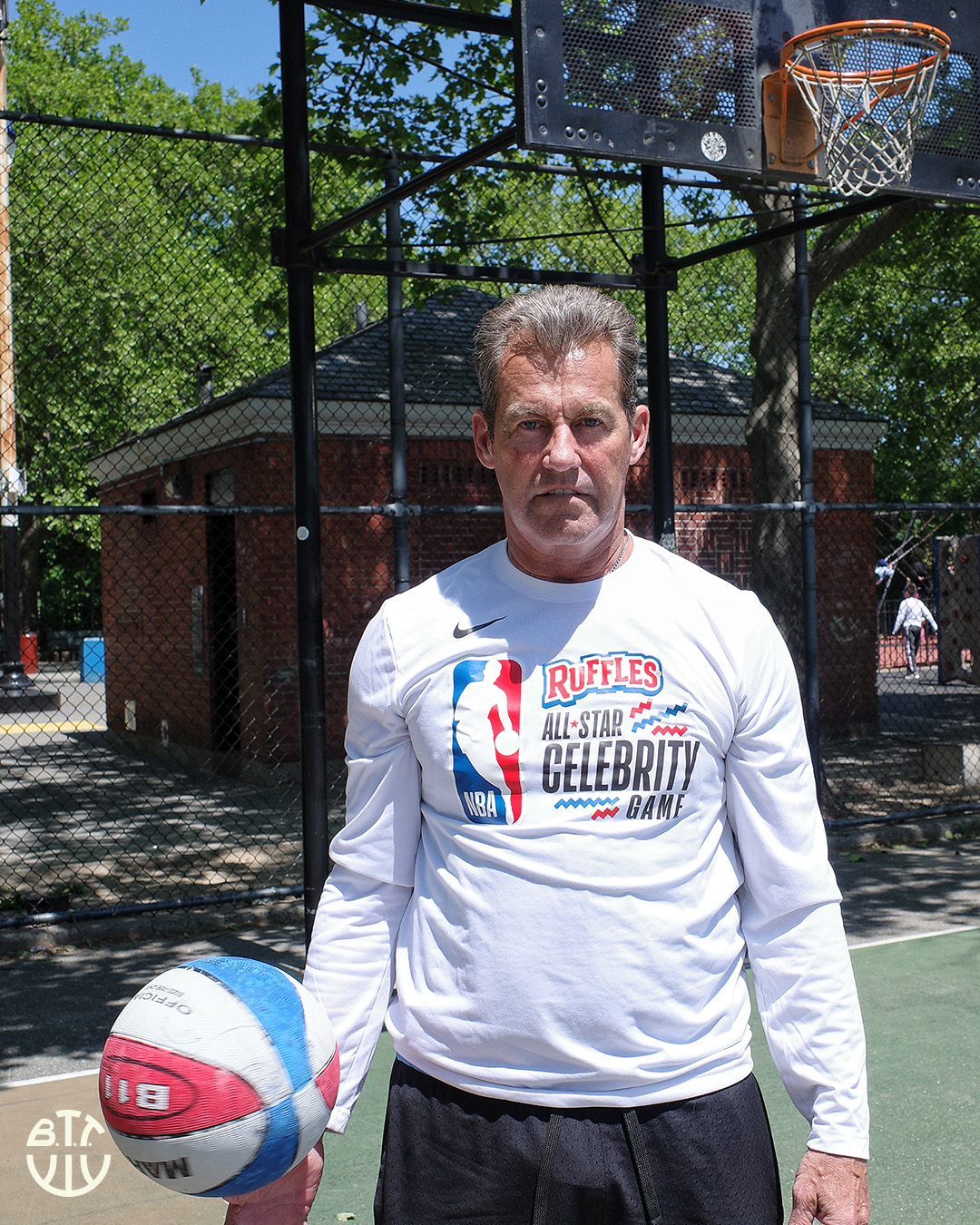
When Jack began beating all his friends, Randy had him playing against his guys — competing against 16-year-olds when he was only 12. When he began beating them, Randy would take him to a more competitive park to play. In the meantime, he continued to develop and improve while playing for his high school varsity team. As well as developing a quick first step and being springy enough to dunk as a six-footer, Jack became perhaps best known as one of the best shooters that New York had ever witnessed. As a teenager, he would put up 1,000–1,500 shots per day, grabbing his own rebounds — until there weren't so many to run after.
Later, he became a familiar face and one of the most respected players at West 4th Street — The Cage — in Manhattan’s West Village, long regarded as one of the most competitive pickup courts in the world. He was a sharpshooter, a ball handler, and a hot-headed trash talker — key components in forming an archetypal NYC streetballer who could hold his own against the city's toughest players. Unsuspecting opponents got rocked. Fences would shake.
Although profoundly talented, Jack's basketball journey was far from straightforward. Educational struggles left him unable to receive Ohio University's offer to play D1 basketball (one of 17 offers at the time) — a devastating blow. The combination of his father's criticism and struggles to find a clear path meant that he began struggling with alcohol, working a string of low-paid jobs and living a party lifestyle.
"When you're constantly told you're a screw-up, you behave like a screw-up — and you become a screw-up."
This cycle continued for Jack into his mid-30s, until he was spotted spinning a basketball on his finger on the sidelines of a tournament in Florida. That moment led to tryouts and eventually to performing as a featured showman with the Harlem Wizards — a show basketball team known for combining flashy tricks, humour, and high-energy dunks to entertain crowds. But today, Jack runs his own entertainment business (blackjackryan21.com) — keeping full control of his shows, appearances, and bookings.
In the same way that he had once worked on spinning the ball on his finger like Curly Neal, or on the shooting stroke that Randy had taught, Black Jack worked on tricks. He went from spinning one ball to spinning six, seven, eight — even nine — earning three Guinness World Records: the longest time spinning a basketball on his nose, on his toenail, and the most blindfolded free throws made in one minute. He went from the Wizards to NBA halftime shows, to performing at birthday parties, school assemblies, basketball camps, and anywhere else a little magic was needed.
"I didn't make it to the NBA — if I did, it would've been short-lived."
It took Jackie Ryan a while, but he found purpose doing something he was always meant to do. His antics bring smiles to children's faces and adults to their feet. His mother lived long enough to witness his success and once reflected in a TV interview that "he's been pulling these tricks before he was walking and talking!" While his dad passed before Jack's career took off, becoming a father himself has left a legacy that his own father would be proud of. His daughter, Morgan, has been an integral part of his shows from a very early age and has gone on to hoop at Pace University.
“I get this question all the time — ‘Who’s your favourite player?’ Yeah, sure, Dr. J, Michael Jordan, Steph Curry… I’ve seen them all. I could watch Jordan drop 60, Steph hit 70 — and yeah, it’s great. But my favourite player? It’s my daughter. When I go watch her play, I’m nervous, I’m excited, I’m shitting my pants. I can’t wait to get there. Nothing compares.”
Jackie’s story doesn’t end with trophies or a stat sheet. His legacy lives in the smiles of kids he entertains, in the countless archives that have documented his incredible story, and in the nods from players who recognise game when they see it. In a city that raised streetball killers built on grit and grind, Jack brought something else: joy. He’s the kind of show-off who makes you stop what you were doing just to watch — and maybe try to do it yourself. No one likes a show-off, apparently. Unless he makes you believe you can do something incredible, too.
At East 5th St Park, Jackie Ryan is rocking the Jordan XXXVIII ‘Light Marine’. “I’ve been a Jordan guy since day one — back when he was at North Carolina. Born in Brooklyn, just like me. I’ve even got the Jumpman tatted on my leg,” he says. “It’s Jordan everything for me.” Available now in-store or online at bouncewear.com.
